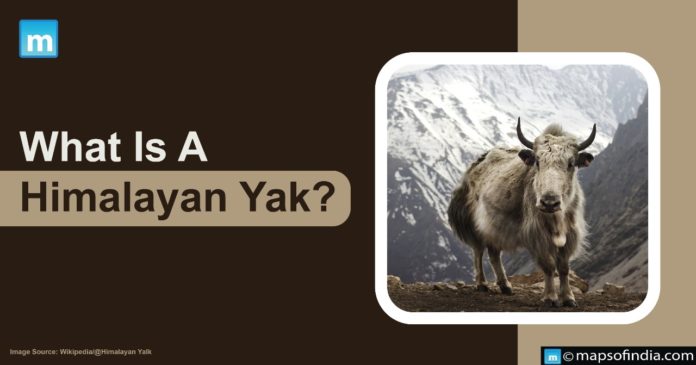The Food Safety and Standard Authority of India (FSSAI) has accepted the Himalayan Yak as a food animal. The reason behind declaring the Himalayan Yakas the food animal is because of the high altitude the animal is raised and raised for obtaining food and other valuable materials. However, the animal has been highlighted because of its declining population in high altitudes. This bovine animal is reared to get milk.
Himalayan Yak is a bovine animal, and it belongs to the species of the Bovini tribe, which also includes other animals such as buffalo, cattle, and bison. The animal can survive in harsh temperatures of about 40 °C. This animal is well adapted to the weather conditions, and on its skin, there is a massive curtain on its body that strives to keep the animal warm. The animal is considered a significant animal for the Himalayan folks.
As per the sources for the first time, this Himalayan animal was reared and domesticated by Guru Rinpoche, the founder of Tibetan Buddhism. The Himalayan yaks are the building blocks and lifeline of the Himalayan nomads and pastoral folks of the high altitude. Under the method of transhumance, which is primitive, the Himalayan yaks are domesticated and reared in higher altitudes.
The Himalayan yaks are primarily found in northern and southern hilly areas such as Jammu, Arunachal Pradesh, etc. Although there has been a significant decline in the domestication and rearing of the Himalayan yaks, more of the younger generation is not engaging in rearing the yaks. The milk and meat of yak are not used for commercial purposes at a large scale, and it is used by the local tribe alone.
The benefit of Himalayan Yak ranges from socio to economic for the nomads of the Himalayan region. Due to the absence of certain other agricultural products in the higher elevations of the Indian Himalayas, which makes it challenging for animals besides the yak to sustain, the yak exists to serve a complex and nuanced social-cultural and financial function for the nomadic peoples who rear it pretty much exclusively for their health and nutrition and subsistence protection.
Yaks beyond the frontiers are believed to be struggling from consanguinity even though there isn’t sufficient new bovine genetics obtainable from the original yak area due to conflicts and warfare that have also prompted frontiers to collapse.
Yaks are battling excessive heat during the summer months of the season due to the rising tendency in average temperatures at higher altitudes. Thus this response influences the animal’s biological responsive patterns. They are classified by the (International Union for Conservation of Nature). IUCN is either Bos mutus or Bos grunniens, depending upon whether they are tamed or untamed.





